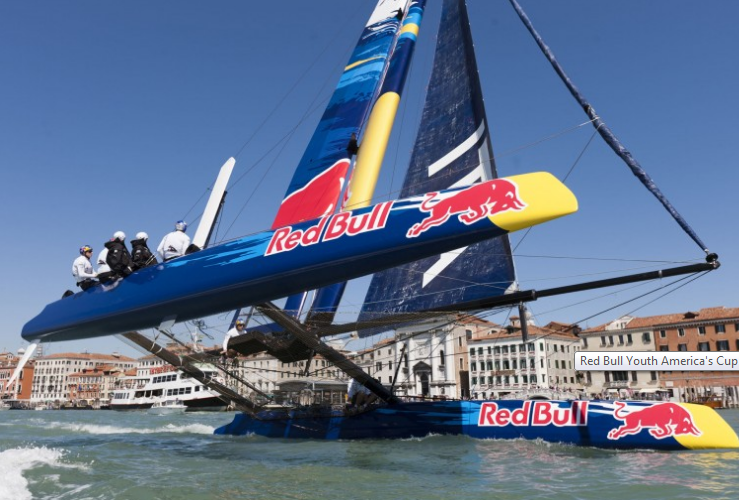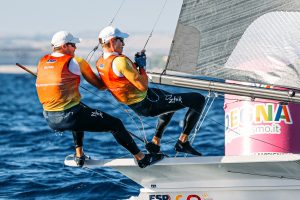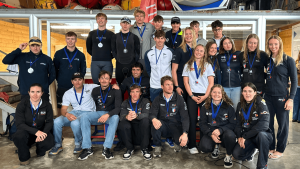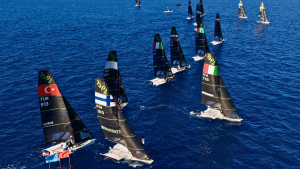At the half way point of the Red Bull Youth America’s Cup the sailing world is getting to see some exciting racing. With the America’s Cup racing proving to be a dud other than for watching the technology, it has been wonderful to see 2 days of excellent fleet racing. In 4 races there have been 4 different winners, including 49er sailors Burling/Tuke, Ecklund/Durling, and Freitas. There has also been lots of passing, boat on boat encounters, stunningly executed tactics and last minute boathandling that has shown us the best of what sailing can offer in terms of excitement.
The guys at Red Bull m along with along with Russel Coutts must be given full credit for creating and enabling the most exciting part of the America’s Cup to go forward. It should not be a surprise Red Bull picked the winning concept over a year ago, it’s an easy choice. High budgets, no nationality, open design, limited teams, old pros versus, match racing versus low budget, mandatory nationality, one design, multiple teams, and youths – it’s no contest.
The 49er class is on the same path as the Red Bull Youth America’s Cup. We have low costs, nationality, a range of ages, and the same bunch of amazing sailors, though of course we have the best women teams as well! We also have adopted a very similar style of racing, with Theatre Style finals being very similar to the bounded courses the AC guys are sailing. There has been a misplaced outcry from some commentators and analysts of the America’s Cup blaming the boundaries for the limited passing in the event. The RBYAC proves this is false. We’ve seen plenty of passing and passing opportunities so far, and the action has been enhanced by the lane boundaries, forcing extra crosses, extra maneuvers, extra errors, and extra action.
The only differences between the formats of the RBYAC and the 49er Theatre Style Finals is the race duration, and starting style. It think we can agree that both are good!
The race duration of Theatre Style is 10 mins (3 races per day) and the RBYAC has been ~22 mins. There has been good action all the way around the course in RBYAC, so it is hard to argue against the longer races. The 49er races are action packed as well, but the teams more often tack at the boundaries overly simplifying the racing. Bigger courses are a challenge to create using lane ropes, but the ropes are becoming increasingly manageable. Saying that, 10 minute races are about the right length for youth attention spans. The upcoming 2013 Seiko 49er World Championships will use 20 minute races with 20 boats so we’ll get a chance to see how that looks soon enough.
One thing I’ve noticed is that the production teams for both 49er and RBYAC are having trouble balancing the need to cover the leader with the need to cover the action. As both production teams develop, they are spending less time showing and discussing the lead boat and more time following the battles from within the fleet. This is the best part of sailing/racing, and will also become the best part of these broadcasts as the production teams learn how to shift their coverage to the action.
The reaching starting style of RBYAC is a spectacular idea that is letting the racing down more than it builds it up. The starting skills are similar to windward starts, but there are fewer winners and the leader is decided so quickly that it overly stretches out the field. As you can see from the video below, a windward start can produce 8 teams each with a lane and each in the game whereas within the first 15 seconds or so of a reaching starts the 2 or 3 boats that got it right are clearly ahead. There is so much dirty air on these reaches to runs that the fleet stretched out a ton in the first 1.5 legs of the race.
In summary, both the 49er Theatre Style and RBYAC have much more in common with each other than they are different. They have the same sailors, the same general features, and both are producing the most exciting racing in the world today. We’re looking forward to more of it!







